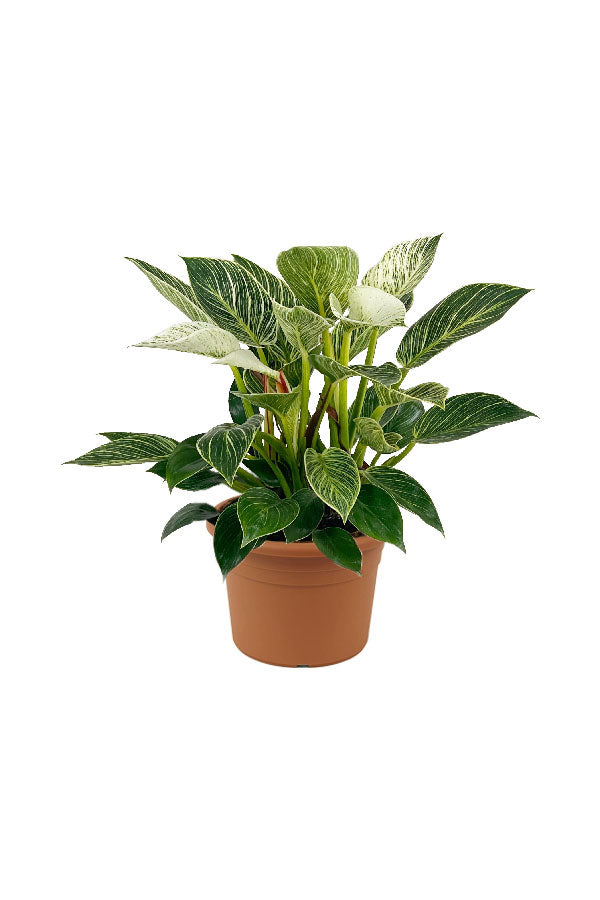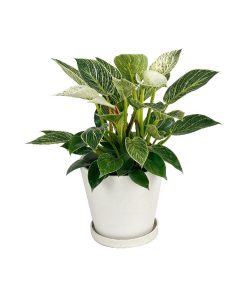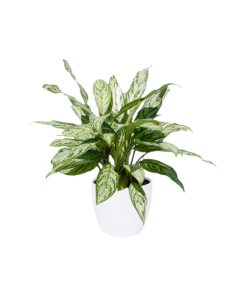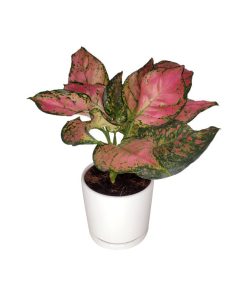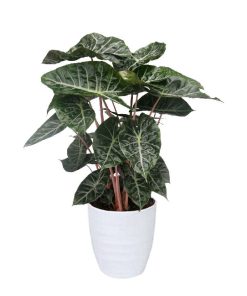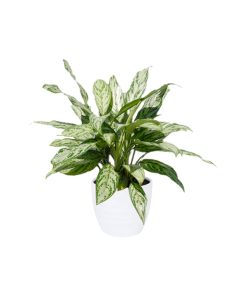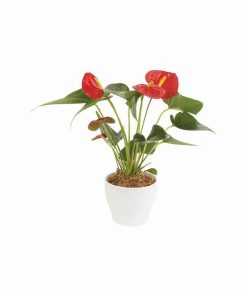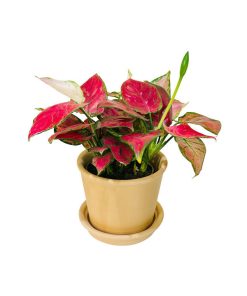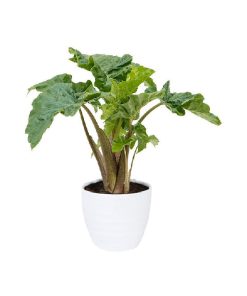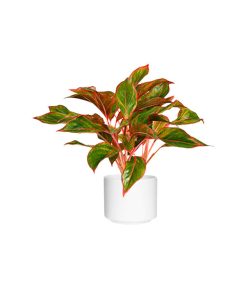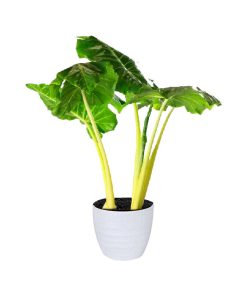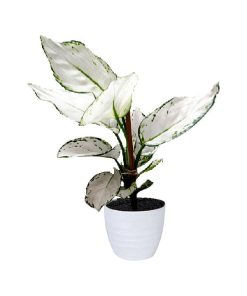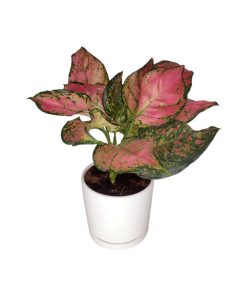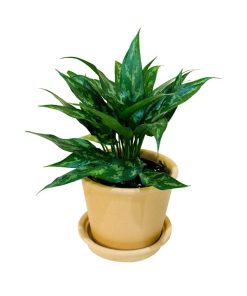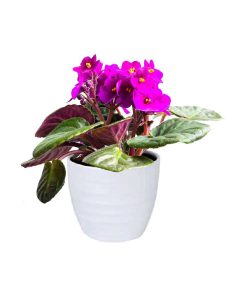Philodendron Birkin – Indoor Plant Plantsworld.ae
د.إ 79,00 د.إ 39,50
Philodendron Birkin is an attractive and relatively new cultivar of the Philodendron genus. It is a hybrid plant believed to be a cross between Philodendron rojo congo and Philodendron erubescens. The Philodendron Birkin is known for its unique foliage and striking appearance.
Here are some key features of Philodendron Birkin:
Foliage: The leaves of Philodendron Birkin are the main attraction of this plant. They have a glossy, dark green color with pinstripes of creamy-white or yellow running along the veins. The pinstripes vary in intensity, giving each leaf a unique pattern. As the plant matures, the variegation becomes more pronounced.
Size: Philodendron Birkin is a relatively compact plant and usually grows to a moderate size, reaching around 1 to 2 feet (30-60 cm) in height. It has a bushy growth habit with multiple stems emerging from the soil.
Light requirements: This plant thrives in bright, indirect light. Avoid exposing it to direct sunlight for extended periods, as it can scorch the leaves. However, it can tolerate lower light conditions, although the variegation may become less pronounced.
Watering and humidity: Philodendron Birkin prefers slightly moist soil. Allow the top inch (2.5 cm) of the soil to dry out between waterings to avoid overwatering. It benefits from moderate to high humidity, which can be achieved by misting the leaves or placing the plant on a humidity tray.
Temperature and environment: Philodendron Birkin prefers warm temperatures between 65-85°F (18-29°C). It is commonly grown as an indoor plant but can also be placed outdoors in a shaded or partially shaded area in warm, tropical climates.
Care and maintenance: Regular fertilization during the growing season (spring and summer) can help promote healthy growth. Pruning can be done to maintain the shape and remove any leggy or damaged growth. Propagation is commonly done through stem cuttings.
| Size | 20-30cm |
|---|---|
| Pot | Nursery Plastic Pot, White Ceramic Pot |
Fast Shipping & Professional Packing
We are able offer many shipping options thanks to our long-term partnership with UPS FedEx DHL. Our warehouse staff is highly educated to pack your items exactly as per the specifications we offer. Your items will undergo an extensive inspection and will be securely secured prior to being delivered. We ship to thousands clients every day in a variety of countries. This shows our commitment to becoming the biggest retailer online in the world. The distribution centers and warehouses distribution are in Europe, as well as the USA.
Orders with more than one item are assigned processing times for each item.
We will thoroughly inspect all products before they are shipped. The majority of orders will be shipped within 48 hours. Delivery is expected to take between 3 and 7 days.
Returns
Stock is dynamic. It's not completely managed by us since we are involved with multiple parties such as the factory and the storage. So the actual stock may alter at any time. Please understand it may happen that your order will be out of stock once your order has been made.
Our policy is valid for 30 days. If you don't receive the product within the 30 days period, we're not able to issue the option of a refund or exchange.
The item cannot be used and in the original packaging. The item must be in its original packaging.
Related products
Indoor Plant
Indoor Plant
Indoor Plant
Indoor Plant
Indoor Plant
Indoor Plant
Indoor Plant
Indoor Plant
Indoor Plant
Indoor Plant
Indoor Plant
Indoor Plant
Indoor Plant
Indoor Plant
Indoor Plant
Indoor Plant
Indoor Plant
Indoor Plant
Indoor Plant
Indoor Plant
Indoor Plant
Indoor Plant
Indoor Plant
Indoor Plant
Indoor Plant
Indoor Plant
Indoor Plant

